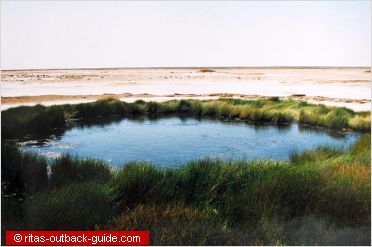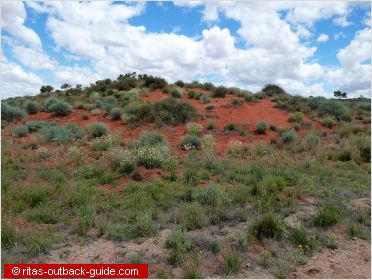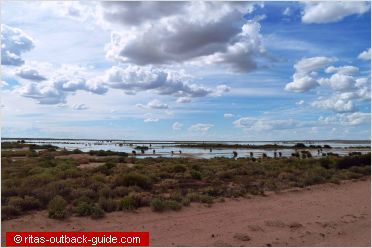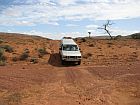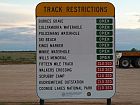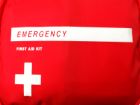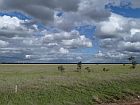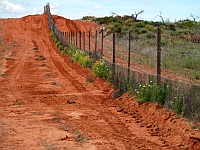
Outback Safety: Water
Water makes the difference in the Australian Outback
So what's most important about Outback safety? Water, of course! Water is the most precious resource in the Australian Outback, it should not be wasted. Please do never forget this fact.
In the central and eastern parts of the Outback water usually comes from artesian bores and wells. This water might be treated in some Outback towns and okay to drink, however, it is highly recommended to ask the locals about the quality of tab water. Especially in towns along the Oodnadatta Track water is considered as inedible. It has a high level of salt & minerals and can make your stomach upset. Be careful. You don't want to spoil your precious holiday, do you?
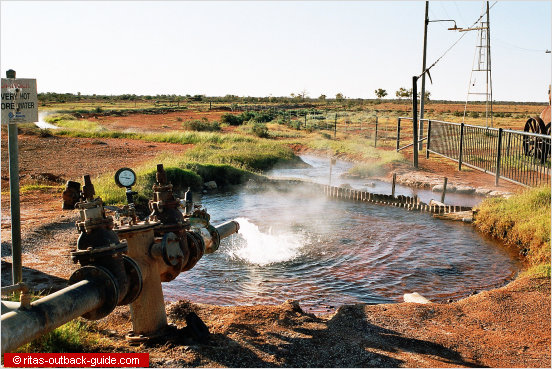
Additional to the water from the Artesian Basin rain water is collected in huge tanks. As rain is very unreliable, this water is precious for the locals.
Rain water tanks can also be found at rest areas and in National Parks. Don't rely on that water, always be self-sufficient.
Capital Cities
Accommodation
Special Interests
- General Facts
- Australian States
- Photo Gallery
- Climate & Bushfires
- Australian Wildlife
- Australian Opal
Rent A Campervan
The Great Artesian Basin
The Great Artesian Basin is a large artesian groundwater basin beneath inland Queensland and the northeast of South Australia. It reaches also into the north of New South Wales and the southeastern corner of the Northern Territory.
The basin consists of a multi-layered aquifer system that was created more over millions of years. Natural outlets are the "mound springs" in the southwest in the Oodnadatta Track area.
Once the Artesian Basin was discovered (in the late 19th century), it became the essential water source to open the inland for pastoral activities. Thousands of bores were drilled for domestic use.
How much water to take?
Travelling in the outback means that you should always carry plenty of water, just in case your car breaks down, and you have to wait until help arrives. Recommendations vary slightly, but you should plan with 5 to 7 litres per person and day, this includes water for cooking as well. The more remote the area is, the more water you should take with you.
We always stock at least 20 l water as an emergency ration that we won't touch until we're back to civilisation. Hey, the Outback is not uncivilised, but you know what I mean!
When you leave the car to explore a place of interest, always take a large water bottle with you. The inland's dry heat can dehydrate you quickly. It is a parched land, but don't be scared - be prepared, take Outback safety seriously. Of course, for longer walking trips you'll need to carry more water.
Rain in the Outback
Talking of water, and this time I don't mean drinking water. Rain can spoil your plans sometimes. Rain on unsealed roads and tracks makes Outback driving difficult, and requires some patience. Dirt roads get closed after heavy rain. So you always should plan an extra day, or two, for a delay.
Although the Outback is a very dry place, it rains at times, and rain can be torrential out there. Unfortunately, the weather is not predictable. You will often see the floodway signs and a marker that'll show the depth of water, when there is water over the road. If you're in doubt how deep the water is, stop and check it.
2009, 2010 and 2011 were very wet years in many parts of the Outback. Water was flowing into Lake Eyre three years in row, a very rare event.
Pay attention to another important Outback Safety rule:
- Don't camp in dry river and creek beds. You could end up with wet feet, or even worse.
